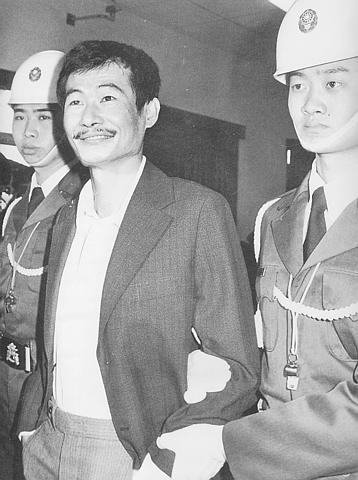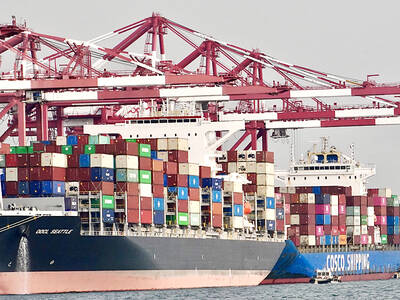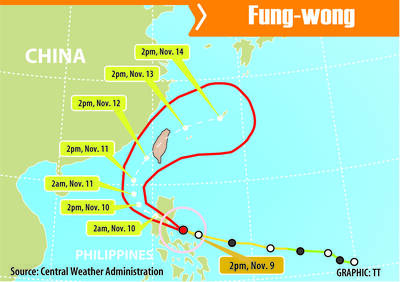At the time of their arrest, much of the general public saw the so-called Kaohsiung Eight -- the main group of defendants charged with fomenting the 1979 Kaohsiung Incident -- as anti-social criminals who had conspired to overthrow the government.
Ironically, however, it was the public trial before a martial law court that ultimately made it possible for six men and two women accused to alter their images as criminals and, most importantly, to convey the idea -- the dream -- of an independent Taiwan to the public.
In practical terms, it was a court-martial (Taiwan was under martial law at the time) on charges of sedition, which led to lengthy jail terms for the eight. However, participants believed that via an open trial, they had succeeded in raising public awareness of the right to self-determination for both themselves and Taiwan.

FILE PHOTO
"Over eighteen million Taiwan people have to be awakened to the fact that Taiwan is a de facto independent country, which was an untold truth for thirty years," Shih Ming-teh (
"The reason we started Formosa magazine (
Three months after the Kaoh-siung Incident -- a large march which eventually turned violent when police and demonstrators clashed -- the eight accused were tried by a military court for their roles in the incident.
Under the charge they were facing -- sedition -- the death penalty was mandatory. However, none were sentenced to death -- even though Shih had defiantly requested it for himself during his testimony; he received a life sentence instead. The other seven sentences ranged from 10 to 14 years' imprisonment.
However, the sentences were actually seen as a victory by the team of defense lawyers.
"At that time, anyone tried by a military court was supposed to get the death sentence, unless granted clemency by the president," said Chen Chi-sen (
Confessions extracted prior to the trial were used as primary evidence against the eight accused. Throughout the trial, however, the defense lawyers kept challenging the legality of the confessions, hinting that they were extracted through torture or other abusive means.
Chen Shui-bian (
"Your honor, please investigate the legality of the confessions," he said at one stage. "If they were extracted by torture, not given of their own free will, the charges brought against the accused are clearly dubious and we can stop ourselves from wasting any more time debating the facts of this case."
Chen's use of the word "torture" reportedly stunned the court into a few moments of silence as the audacity of his remarks sank in. It was a seminal moment, and from then on, the rest of the defense team took turns raising questions about the legality of the confessions.
Chen Chi-sen said the primary aim of the defense strategy was to convince the court of the inadmissibility of the confessions. But he admitted that they were concerned about pushing the issue too far, in case it provoked a backlash.
"We had to overturn their confessions, which were seen as very powerful evidence. But we also had to restrain ourselves from going too far. Otherwise, our efforts would have been in vain," Chen said.
Although handled by a military court, it was an open trial which the press was allowed to cover. During the nine-day trial, newspaper sales generally rose in proportion to coverage given to the trial, sparking intense competition between the two major dailies, China Times and the United Daily News.
The intense media coverage had a deep impact on the public's perception of the accused and the incident itself. In reading newspaper reports of the trial, few failed to be impressed with the well-organized and well-presented arguments put forward by the accused and their defense lawyers.
Above all, many people, especially the younger generation, grew inspired by the opposition activists' passionate pursuit of the belief that the people of Taiwan, not China or the US, should have the final say over their own fate.
The current Taipei County Commissioner Su Tseng-chang (蘇-s昌), a member of the defense team, summed up the trial's impact on society succinctly: "It allowed the public to hear the truth about the incident. And when more and more people came out to support our ideals, the KMT was forced to realize it was facing an irresistible trend."

The Central Weather Administration (CWA) yesterday said it expected to issue a sea warning for Typhoon Fung-Wong tomorrow, which it said would possibly make landfall near central Taiwan. As of 2am yesterday, Fung-Wong was about 1,760km southeast of Oluanpi (鵝鑾鼻), Taiwan’s southernmost point, moving west-northwest at 26kph. It is forecast to reach Luzon in the northern Philippines by tomorrow, the CWA said. After entering the South China Sea, Typhoon Fung-Wong is likely to turn northward toward Taiwan, CWA forecaster Chang Chun-yao (張峻堯) said, adding that it would likely make landfall near central Taiwan. The CWA expects to issue a land

Taiwan’s exports soared to an all-time high of US$61.8 billion last month, surging 49.7 percent from a year earlier, as the global frenzy for artificial intelligence (AI) applications and new consumer electronics powered shipments of high-tech goods, the Ministry of Finance said yesterday. It was the first time exports had exceeded the US$60 billion mark, fueled by the global boom in AI development that has significantly boosted Taiwanese companies across the international supply chain, Department of Statistics Director-General Beatrice Tsai (蔡美娜) told a media briefing. “There is a consensus among major AI players that the upcycle is still in its early stage,”

The Central Weather Administration (CWA) yesterday said it is expected to issue a sea warning for Typhoon Fung-wong this afternoon and a land warning tomorrow. As of 1pm, the storm was about 1,070km southeast of Oluanpi (鵝鑾鼻), Taiwan’s southernmost point, and was moving west-northwest at 28 to 32kph, according to CWA data. The storm had a radius of 250km, with maximum sustained winds of 173kph and gusts reaching 209kph, the CWA added. The storm is forecast to pass near Luzon in the Philippines before entering the South China Sea and potentially turning northward toward Taiwan, the CWA said. CWA forecaster Chang Chun-yao (張峻堯) said

‘SECRETS’: While saying China would not attack during his presidency, Donald Trump declined to say how Washington would respond if Beijing were to take military action US President Donald Trump said that China would not take military action against Taiwan while he is president, as the Chinese leaders “know the consequences.” Trump made the statement during an interview on CBS’ 60 Minutes program that aired on Sunday, a few days after his meeting with Chinese President Xi Jinping (習近平) in South Korea. “He [Xi] has openly said, and his people have openly said at meetings, ‘we would never do anything while President Trump is president,’ because they know the consequences,” Trump said in the interview. However, he repeatedly declined to say exactly how Washington would respond in